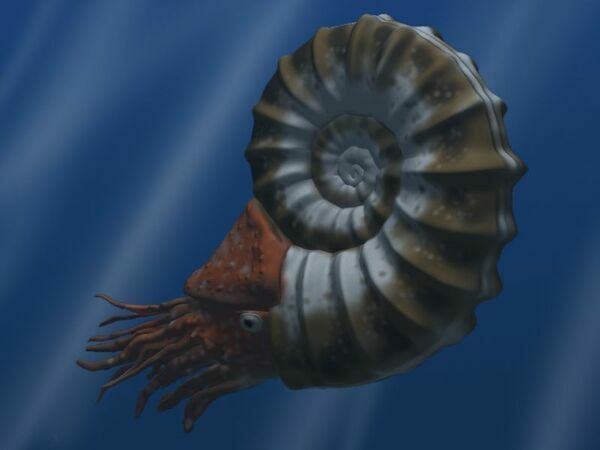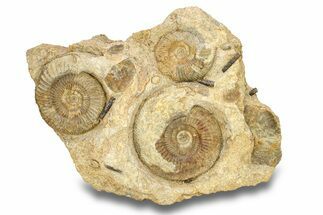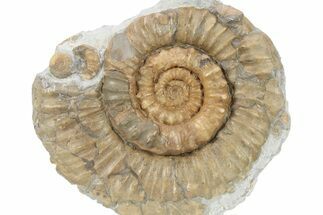This Specimen has been sold.
14.6" Jurassic Ammonite, Belemnite & Gastropod Cluster - England
This is an outstanding, 14.6" wide concretion filled with an incredible mixture of fossil ammonites, belemnites, bivalves, and gastropods. It was collected from the Belemnite Marls (Taylori Subzone, Jamesoni Zone) at Stonebarrow (East beach) near the town of Charmouth, England. The concretion was painstakingly prepared using mechanical tools to expose these fossils and bring them out in high relief.
It comes with a metal display stand.
Identification:
Ammonites - Beaaniceras sp. & Tragophylloceras sp.
Gastropods - Pleurotomaria sp. (very uncommon) & Eucyloscala sp.
Belemnites - Various Unidentified
Bivalves - Parainoceramus sp., Chlamys sp. & Pseudolimea sp.
The specimen was found in 2018 and prepared by Lizzie Hingley. Nick Hawes fossil collection.
It comes with a metal display stand.
Identification:
Ammonites - Beaaniceras sp. & Tragophylloceras sp.
Gastropods - Pleurotomaria sp. (very uncommon) & Eucyloscala sp.
Belemnites - Various Unidentified
Bivalves - Parainoceramus sp., Chlamys sp. & Pseudolimea sp.
The specimen was found in 2018 and prepared by Lizzie Hingley. Nick Hawes fossil collection.
At the base of the Belemnite Marls is Apoderoceras or Armatus Limestone (Bed 105). This is a .35 meter (~14 inches) limestone which crops out a reef visible at low tide at Westhay Water. Above that come the main sequence of marls with a cyclical variation in carbonate content. The top of the unit is taken as the Belemnite Stone (Bed 121), a laterally persistent limestone full of belemnites, ammonites, bivalves, and some rhynchonellids.
About Ammonites
Ammonites were ancient marine cephalopods, similar to today's squids and octopuses, but with a defining feature: their distinctive, tightly coiled spiral shells. These shells, resembling those of modern nautiluses, served as both a protective home and a buoyancy aid, allowing ammonites to navigate the prehistoric seas with ease. First emerging around 240 million years ago in the Triassic Period, ammonites thrived for over 175 million years, adapting through numerous forms and sizes. As predatory creatures, they likely fed on smaller marine organisms, using their tentacles to capture prey. However, their long reign came to an end 65 million years ago at the close of the Cretaceous, coinciding with the mass extinction event that also eliminated the dinosaurs.
Ammonites were ancient marine cephalopods, similar to today's squids and octopuses, but with a defining feature: their distinctive, tightly coiled spiral shells. These shells, resembling those of modern nautiluses, served as both a protective home and a buoyancy aid, allowing ammonites to navigate the prehistoric seas with ease. First emerging around 240 million years ago in the Triassic Period, ammonites thrived for over 175 million years, adapting through numerous forms and sizes. As predatory creatures, they likely fed on smaller marine organisms, using their tentacles to capture prey. However, their long reign came to an end 65 million years ago at the close of the Cretaceous, coinciding with the mass extinction event that also eliminated the dinosaurs.
Belemnites are probably the most well known extinct cephalopod after the ammonites. They lived during the Jurassic and Cretaceous periods and are fairly common fossils found throughout the world. They had a hard, internal, cone-shaped structure that is often preserved as a fossil, though it is not technically a shell. They had ten arms but, unlike modern squid, these arms had small hooks instead of suckers.
SPECIES
Various Species
LOCATION
Golden Cap, Charmouth, Lyme Regis, Dorset, England
FORMATION
The Belemnite Marls - Taylori Subzone - Jamesoni Zone
SIZE
Rock 14.6 x 10.5", Largest ammonite 2.3" wide
CATEGORY
SUB CATEGORY
ITEM
#316383
We guarantee the authenticity of all of our specimens.
 Reviews
Reviews
















